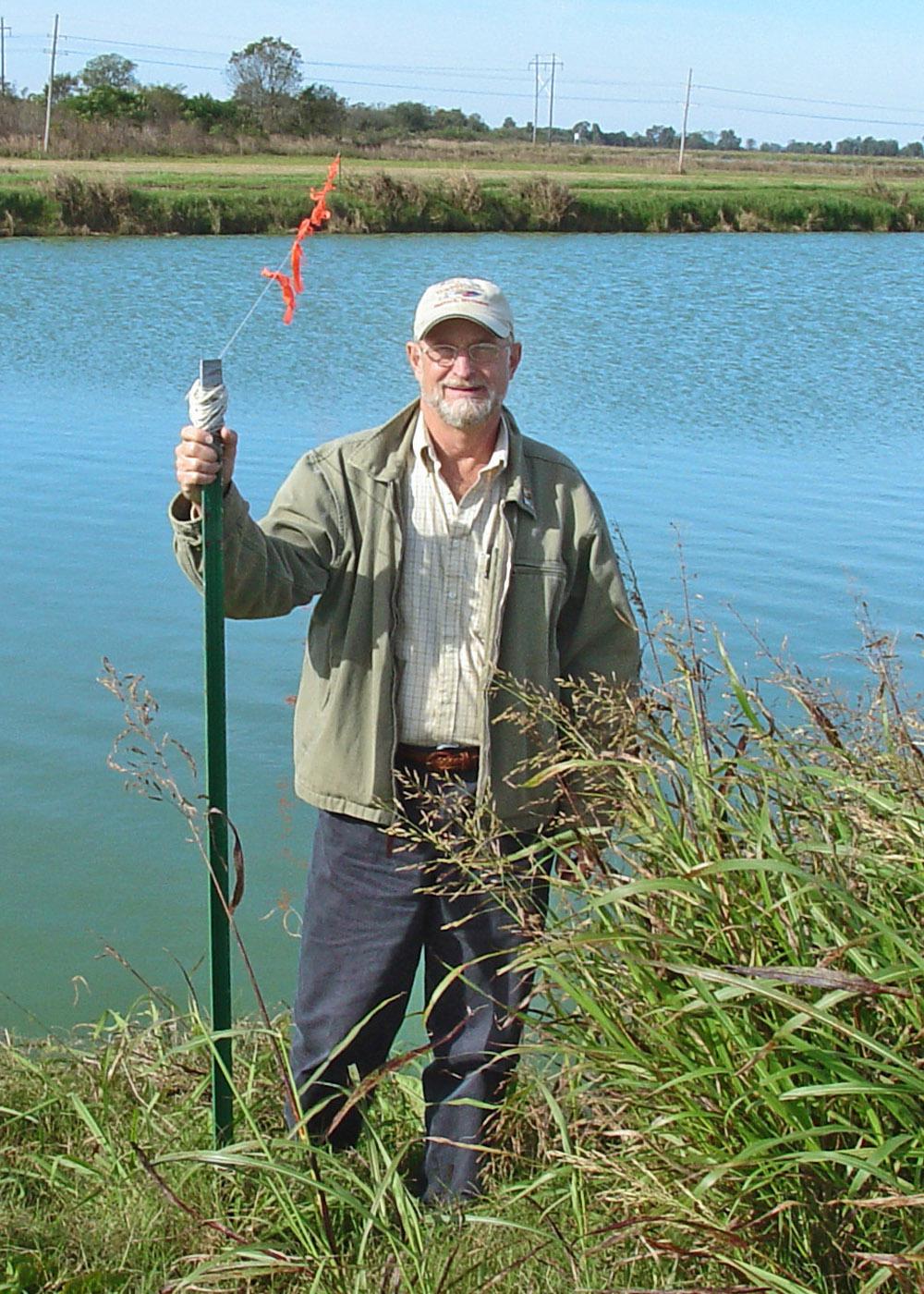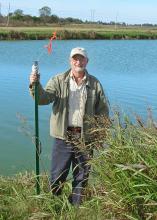Information Possibly Outdated
The information presented on this page was originally released on January 17, 2008. It may not be outdated, but please search our site for more current information. If you plan to quote or reference this information in a publication, please check with the Extension specialist or author before proceeding.
Catfish producers fight cormorants to save crop
MISSISSIPPI STATE -- Mississippi catfish producers want consumers to eat lots of their product, but when those consumers are predatory birds, it's time to get out and patrol the ponds.
Double-crested cormorants are large, black migratory seabirds that somewhat resemble ducks. They can be up to a yard long with a wingspan of more than 4 feet. They seem to have an endless appetite for fish, especially young pond-raised catfish.
Jim Steeby, aquaculture specialist with the Mississippi State University Extension Service, said cormorants prefer fish 5-7 inches long, although they feed on ones as large as 10 inches.
“If you didn't do anything, they could eat you out of house and home. In three weeks, they could clear a 10-acre pond of small fish,” Steeby said. “The only reason they don't eat that many fish is we don't give them a chance to.”
Catfish producers use a variety of methods to scare cormorants off their ponds and keep them moving, including loud noises from “screamers” or “bangers,” propane cannons, and strings placed across catfish ponds about 60 yards apart. Cormorants and pelicans need about 100 yards of open water to take off and land, and these strings limit what is available to the birds.
One of the most successful harassment techniques being used against cormorants is roost dispersal. Steeby said cormorants typically sleep in the cypress breaks at night, and if they are repeatedly disturbed as they roost, they usually move on.
“You have to use a whole variety of things to keep them at bay,” Steeby said. “They have really good eyesight and really good clocks in their heads, and they arrive the moment they know the farmer is leaving.”
Cormorants take up residence in and around Mississippi's wetlands and aquaculture ponds in late November to early December, and usually don't leave until the following March.
“It takes a good deal of man-hours and fuel to patrol the ponds and keep the birds from spending a significant amount of time on the ponds,” Steeby said. “But if you don't take these measures, the amount of fish they consume will be very high.”
Another tool in the fight against profit-eating cormorants is depredation, or the legal killing of predatory birds.
“The largest thing we do in the fight against cormorants is harassment, but to make that work well, you do have to take some birds,” Steeby said. “We don't really put a dent in the population, but it keeps the birds dispersed from the ponds.”
Valerie Burton, an aquaculture biologist with Wildlife Services within the U.S. Department of Agriculture-Animal and Plant Health Inspection Service, said cormorants in Mississippi were first counted at roost in 1990. There were 28,584 birds that year. 2004 was the peak cormorant year, with 81,873 counted at midwinter roost. In 2007, that number was 67,455.
Producers with aquaculture depredation order Form 37 on file with Wildlife Services can kill as many cormorants as needed on their farms to protect their ponds.
“Cormorants caused Mississippi catfish producers $10.3 million in losses by eating 1,350 metric tons of fish in the 2000-2001 cormorant season,” Burton said. “They ate 1,780 metric tons of catfish for a $13.7 million loss in the 2003-2004 season.”
Burton said extensive efforts are being made in their summer nesting grounds around the Great Lakes to limit cormorant reproduction. In the winter feeding grounds farther south, catfish farmers and others are trying to reduce the number of these predatory birds and move them off aquaculture ponds.
“If we were effective and pushed just 10 percent of the cormorant population to the Mississippi River where they feed on shad and other native fish, that would save the Mississippi catfish industry $1.2 million to $1.5 million a year,” Burton said.
Catfish farmers can help their own cormorant control efforts by reporting to Wildlife Services the number of cormorants they kill on their ponds each year. Not only is this a legal requirement of the depredation order, but Wildlife Services can kill only 25 percent of what farmers report taking each year.




